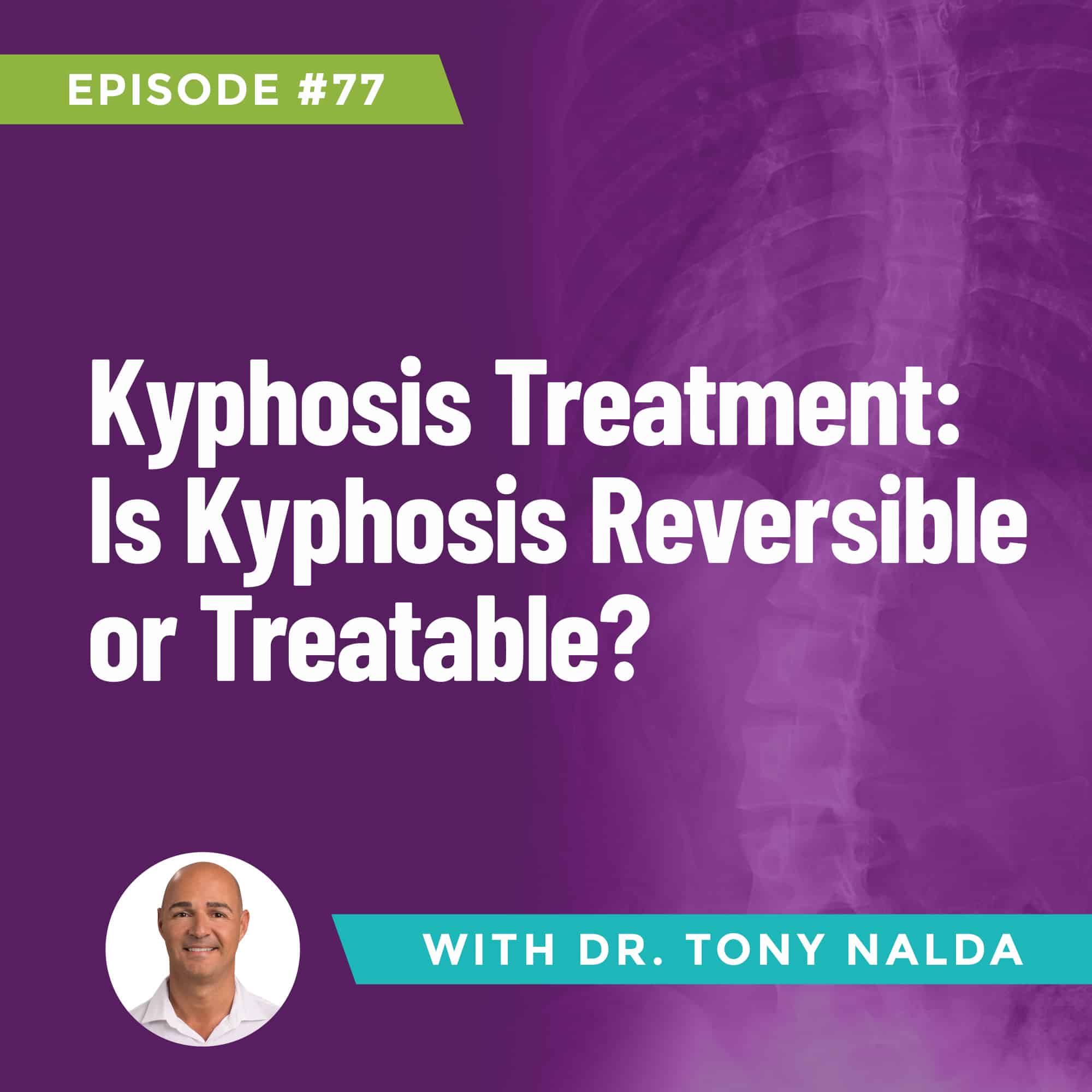Episode 77: Kyphosis Treatment: Is Kyphosis Reversible or Treatable?
The spine has some natural curvatures that are very important to its normal function and alignment. These curvatures play a vital role in maintaining spinal strength, flexibility, and distributing mechanical stress during movement.
There are two essential curvatures: lordosis, which bends forward in the cervical and lumbar spine, and kyphosis, which bends backward in the thoracic spine. These curvatures should exist within a specific range for normal spine function.
Understanding Kyphosis
Kyphosis often includes rounding of the shoulders and upper back, which can lead to discomfort, radicular pain, and stiffness in the thoracic spine. This condition is commonly referred to as a "rounded back" or "hunchback."
Primary Causes of Kyphosis:
- Postural Kyphosis: In today's tech-driven world, poor posture, especially with prolonged device use, can contribute to postural kyphosis. This type is treatable, especially when addressed early.
- Sherman's Kyphosis: This structural kyphosis results from a misshaped vertebra, forming a wedge-like structure. Early intervention is crucial to prevent worsening over time.
Treatment Approaches
Treatment strategies vary depending on the cause of Kyphosis:
- Postural Kyphosis: With its relative flexibility, the thoracic spine responds well to therapies, rehabilitation, and postural exercises, helping to improve posture and alleviate symptoms.
- Structural Kyphosis: When kyphosis becomes resistant to correction through posture alone, more intensive approaches are necessary. These may include specific chiropractic care, physical therapy, extension-focused exercises, muscle strengthening, and corrective bracing.
In treating kyphosis, timing plays a critical role. The sooner it's addressed, the better the chances of successful outcomes, both visually and symptomatically. Proactive treatment during childhood or early stages of adult development can help reshape the spine, prevent further misalignment, and is the key to a healthier, pain-free spine.
For more on this, check out Dr. Tony Nalda’s podcast. Don't forget to subscribe for more valuable insights and discussions.
Artlist.io 847544
Podcast: Play in new window | Download
Subscribe: RSS
Dr. Tony Nalda
DOCTOR OF CHIROPRACTIC
After receiving an undergraduate degree in psychology and his Doctorate of Chiropractic from Life University, Dr. Nalda settled in Celebration, Florida and proceeded to build one of Central Florida’s most successful chiropractic clinics.
His experience with patients suffering from scoliosis, and the confusion and frustration they faced, led him to seek a specialty in scoliosis care. In 2006 he completed his Intensive Care Certification from CLEAR Institute, a leading scoliosis educational and certification center.
About Dr. Tony Nalda
 Ready to explore scoliosis treatment? Contact Us Now
Ready to explore scoliosis treatment? Contact Us Now








